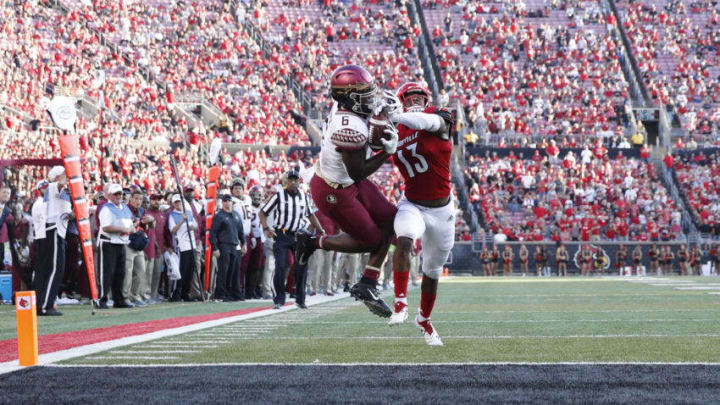
FSU football needs another playmaker on offense, and Chop Chat’s Sam Tschida is here to take a look at who FSU fans should expect to see lined up at tight end in 2020
Over the past several weeks, I have been previewing what the FSU depth chart will look like come fall practice time in 2020. You can read all the defensive position posts here.
Now that defense is done, the offense is next up in the preview series (sorry special teams). I already went over the offensive line, which you can read here. Today, I’ll take a look at tight ends.
The last two offensive schemes have featured the tight end to varying degrees. In Jimbo’s pro-style/spread hybrid, Nick O’Leary was always a solid second option for EJ Manuel and Jameis Winston, while Ryan Izzo’s impact was felt much more as a blocker than pass-catcher.
Fisher emphasized the tight end more than the previous regime, but aside from O’Leary’s junior and senior seasons, they were mostly used as blockers.
Under the previous coaching staff, which ran two slight variations of the “Baylor Spread”, the tight end saw around the same amount of action, albeit not in the traditional way. Tre McKitty and Cam McDonald both played the traditional tight end role, and combined averaged 27.5 catches in the two years under Taggart. This was slightly more than under Fisher, whose tight ends would normally total anywhere from 20-25 catches in a season, with exceptions for studs like O’Leary.
In addition to the traditional tight end role, the previous scheme used an H-back instead of traditional fullback, which does seem to fit in with Norvell’s scheme as well. Gabe Nabers excelled in the H-Back role last season, emerging as a reliable blocker and acted as the quarterback’s “safety valve” on most passing combinations, as we can see here.
Norvell’s scheme does use the tight end, but not any more than the two previous offensive schemes. Most plays that Memphis ran with Norvell calling the play were either RPOs, play-action passes, or variations of inside zone/the shotgun-power run game.
The starting tight end last season, Joey Magnifico (the best name in college football), caught 20 passes and two touchdowns. During Norvell’s tenure in the Mississippi delta, his tight ends averaged around 30 catches per season, with the only outlier being 2019 after the Tigers lost Sean Dykes to graduation in 2018.
